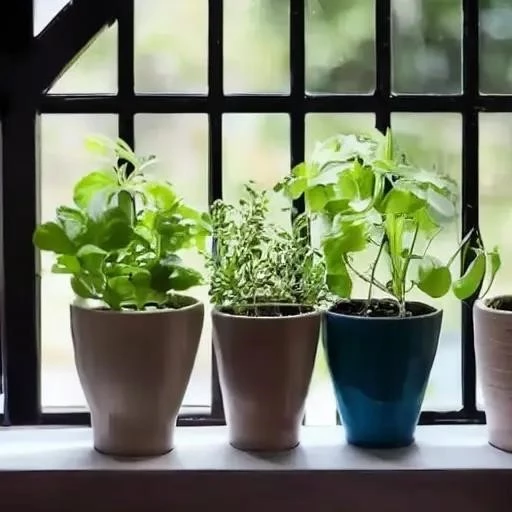In an increasingly urbanized world, the dream of cultivating fresh, organic produce often feels like a distant fantasy, reserved for those with sprawling backyards and ample green space. Yet, a quiet revolution is rapidly unfolding, empowering countless city dwellers and apartment residents to transform even the most confined areas into thriving oases of greenery. This burgeoning movement, powered by ingenious micro gardening tips, is not merely about growing plants; it’s about reclaiming a connection to nature, fostering sustainability, and enhancing personal well-being, all within the bustling confines of modern life.
From sun-drenched balconies to cozy kitchen windowsills, and even innovative indoor setups, the potential for productive cultivation is virtually limitless. This shift towards compact, efficient gardening methods is fundamentally reshaping our approach to food sourcing and environmental stewardship. By embracing these simple yet powerful strategies, individuals are discovering that a bountiful harvest isn’t predicated on acreage but on ingenuity, a little dedication, and the right knowledge. It’s a compelling proposition, offering a refreshing antidote to the industrial food system and a tangible path toward self-sufficiency.
Key Micro-Gardening Techniques & Benefits
| Technique | Description | Benefit/Example Crops |
|---|---|---|
| Container Gardening | Utilizing pots, grow bags, and various vessels to cultivate plants, allowing for flexibility and mobility. | Ideal for balconies, patios, and rooftops. Excellent for herbs, leafy greens, cherry tomatoes, and strawberries. |
| Vertical Gardens | Growing plants upward on a wall or structure, maximizing space by utilizing tiered planters or pocket systems. | Perfect for small walls or fences. Great for lettuce, spinach, climbing plants like peas, and ornamental flowers. |
| Hydroponic & Aquaponic Minisystems | Soil-less growing methods where plants receive nutrient-rich water (hydroponics) or thrive in symbiotic relationship with fish (aquaponics). | Remarkably water-efficient and fast-growing. Suited for basil, mint, kale, and other rapid-cycle crops indoors. |
| Companion Planting | Strategic grouping of plants that benefit each other, enhancing growth, deterring pests, and improving soil health; | Optimizes small spaces by improving yield and reducing pest issues. E.g., basil with tomatoes, marigolds protecting vegetables. |
For more comprehensive resources and expert guidance, visit the Royal Horticultural Society’s Grow Your Own section.
Cultivating Success: Essential Micro Gardening Tips for Every Enthusiast
Embarking on your micro-gardening journey requires a blend of fundamental principles and adaptive strategies. Firstly, plant selection is paramount. Opt for compact varieties, dwarf cultivars, and plants with shallow root systems. Herbs like basil, mint, and parsley thrive in small pots, as do leafy greens such as lettuce, spinach, and kale. Even a surprising array of vegetables, including radishes, bush beans, and cherry tomatoes, can flourish with adequate care, proving that size truly doesn’t limit ambition.
Secondly, the choice of containers and growing media is incredibly effective in determining success. Fabric grow bags offer excellent aeration and drainage, preventing root rot, while self-watering planters significantly reduce the frequency of watering. Always invest in high-quality potting mix, enriched with compost and perlite, ensuring optimal nutrient delivery and drainage. As Dr. Anya Sharma, an acclaimed urban ecologist, eloquently states, “A healthy root system is the bedrock of any thriving garden, no matter its scale. Providing the right substrate is like giving your plants the perfect foundation for exponential growth.”
Light, the lifeblood of photosynthesis, is another critical factor. Most edible plants require at least 6-8 hours of direct sunlight daily. For those with limited natural light, modern LED grow lights have become a game-changer, offering a remarkably efficient and affordable solution. These technological advancements have democratized indoor gardening, allowing cultivation to continue year-round, irrespective of external conditions. By integrating insights from advanced horticulture, even a dimly lit corner can be transformed into a productive growing zone, brimming with vitality.
Beyond the Basics: Advanced Strategies and Future Outlook
For the more adventurous micro-gardener, exploring techniques like succession planting can maximize yield in small spaces. This involves staggering plantings of the same crop every few weeks to ensure a continuous harvest rather than one large flush. Furthermore, implementing organic pest control methods, such as neem oil sprays or introducing beneficial insects, maintains the health of your miniature ecosystem without harsh chemicals. Each tiny pot, meticulously cared for, becomes a vibrant microcosm of nature’s bounty, providing not just sustenance but also profound satisfaction.
The future of micro-gardening is undeniably bright and pivotal. As global populations continue to concentrate in urban centers, these innovative techniques are driving a profound shift in how we perceive and access food. They represent a powerful tool in enhancing food security, reducing carbon footprints by minimizing food miles, and fostering healthier communities. Leading initiatives like “Green City Cultivators” in bustling metropolises are demonstrating the immense scalability and community-building potential of these small-scale endeavors, proving that collective impact can indeed emerge from individual efforts.
Ultimately, embracing micro-gardening is more than just a hobby; it’s an optimistic declaration of self-reliance and a commitment to a greener, more sustainable future. It empowers individuals to take an active role in their food journey, fostering a deeper appreciation for the cycles of nature. So, whether you possess a sprawling rooftop or just a sunny windowsill, the time to unlock your inner green thumb and experience the transformative power of these revolutionary micro gardening tips is now. Your fresh, homegrown harvest awaits!






